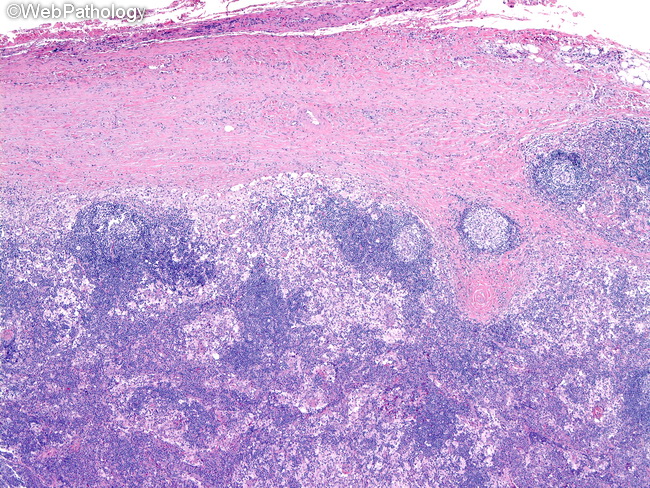Rosai-Dorfman Disease : Pathogenesis


Comments:
The pathogenesis of Rosai-Dorfman disease (RDD) is poorly understood. The proliferating histiocytes are polyclonal and the disease is thought to be a reactive process that may involve host immune dysregulation rather than a neoplastic process. There is no conclusive evidence of involvement of infectious agents such as human herpesvirus 6, parvovirus B19, polyomavirus, or EBV. Given the increased number of IgG4-positive plasma cells and increased IgG4/IgG ratio, it has been suggested that RDD may be linked to IgG4-related diseases; however, it does not meet all the diagnostic criteria and does not neatly fit into the spectrum of IgG4-related diseases. This low power view of a cervical lymph node with RDD shows thickened fibrotic capsule, expanded sinuses containing histiocytes (lighter areas) and a few reactive lymphoid follicles.



